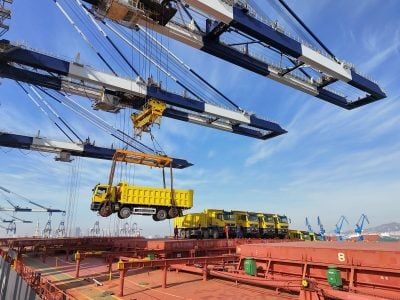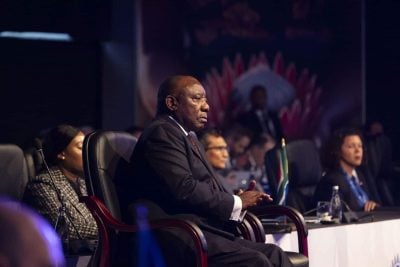Dambisa Moyo’s third book tackles three broad themes: the economic implications of China’s ascendancy as the lead buyer of the world’s resources; the country’s growing financial reach; and the social and political implications of China’s quest for resources.
Describing China’s surge in acquiring commodities to continue to empower its economy, Moyo describes the Chinese as being “on a global shopping spree”. She then puts forward an argument that warns of the consequences of China’s policies as demand outstrips supply.
Many readers will know Moyo as the author of Dead Aid, a remarkably successful book that analysed the aid industry and concluded that it was inherently harmful to developing economies, She offered an alternative – to resort to the world’s financial system to fund development using mechanisms such as sovereign debt. This, she posited, would introduce discipline and good governance to former aid-dependent countries.
It was a well-argued work, but it aroused a hornet’s nest of angry criticism. Generally speaking, this criticism hinged on an argument that there was nothing new in her analysis. It was difficult not to conclude that the underlying complaint was that this young Zambian economist had somehow stolen the thunder of others who had for many years being trying to make a similar point.
The difference was that the mainstream media had picked up on Moyo’s book, itself published by a major publishing house, and quite quickly she became a high-profile commentator, being wheeled out on TV, and contributing articles to the press and speaking at international conferences – as well as consulting for African governments. It further helped that Moyo was young and attractive (with expensive hair and a penchant for high heels) and clearly enjoyed the spotlight.
Her next book was also, in general, well received. How the West was Lost took as its theme the financial markets’ meltdown; its causes, its effects and its legacy. Never mind that this seemed a little like the poacher turned gamekeeper – Moyo, before turning her hand to becoming an author, had worked as an analyst for the giant US investment bank Goldman Sachs.
Her fellow superstar economist, the Oxford don Paul Collier, commenting on How the West was Lost, stated: “Moyo’s diagnosis of the recent disasters in financial markets is succinct and sophisticated … I applaud her brave alarum against out economic and social complacency.”
But does this, Moyo’s latest book, measure up to the two books that went before? It is clearly the result of a great deal of research and data mining. So much so that it raises the question of whether this research is all Moyo’s own work or whether she now employs a team of research assistants. Certainly, given her extensive speaking appearances and other commitments, her workload suggests that she must have some assistance.
However, there is little doubt that the analysis that is drawn from this research is all Moyo’s own work. She writes with verve and passion, and pulls no punches with her narrative, which tells of China’s huge growth story and forecasts more of the same as far as this “relentless march forward” is concerned.
As Moyo puts it: “[China] has accomplished amazing feats in improving living standards for its citizens, but such a massive increase in wealth and economic power invariably comes with increases in demand – for virtually everything.” From this statement she extrapolates the likelihood that global supplies can keep pace with demand.
A constantly changing picture
But by taking a snapshot of current global resources, she tends to overlook the fact that this is a picture that is constantly evolving and changing. For example, she cites two essential resources, food and water, and rightly questions how the world is going to meet a forecast rising demand for these resources of 50% and 30% respectively by 2030.
As far as food is concerned, Moyo seems to fall into the same trap as many commentators in quoting the amount of arable land that is available to grow the food for a rapidly growing world population. She writes that Africa has “fully one third of the earth’s remaining untilled arable land”. That may be so, but what is so often overlooked is the challenge of bringing this land into production with large-scale commercial agricultural techniques, as much of this land is already inhabited.
So the picture is a lot more worrying that it seems? Not necessarily, for human ingenuity is often written out of the equation. That ingenuity might be expressed in biotech advances or such simple remedies as developing urban farming as well as using the world’s oceans in a sustainable manner as a source of foodstuffs.
It would require (excuse the pun) a sea change in attitude towards the oceans that are currently being over-exploited, but with a concerted international effort, the oceans could a readily, sustainable source of seafoods – not only through fishing but with the cultivation of various seaweeds and vegetables. Yet Moyo ignores these alternative sources of nutrition – her book’s index does not even list oceans, seas or fisheries.
The oceans might also supply another valuable resource – potable water, through the development of desalination plants, especially with the utilisation of cheaper renewable energy sources such as photovoltaic and wind turbine-generated power to drive the plants’ processes. But Moyo barely spends two paragraphs on this technology saying “the world has made some progress on this front, but like most solutions to challenges in the resource space, these efforts have not been nearly enough to alter the worsening water scarcity story”.
Yet countering this worsening water scarcity story is news of hope, especially for Africa. A British government-funded research project has reported that the continent has 100 times the amount of water below the surface than what is available on the surface, and these newly discovered resources could help the continent significantly, if they were to be exploited correctly.
Perhaps this research (published in April 2012) was too late to be included in this book, but it does illustrate just how the global resource landscape is constantly changing, and not always in a negative sense.
Another example of how the resource landscape is always changing are the recent discoveries of huge ‘elephant’ gas fields offshore Africa’s eastern seaboard. Yet Moyo’s book fails to mention these resources, estimated by the US Geological Survey to contain over 440 trillion cubic feet of natural gas. Of course, estimates are estimates, but it is clear that the East Africa offshore contains substantial amounts of gas reserves, which, if confirmed at that 440 trillion cubic feet amount, would be more than double Saudi Arabia’s reserves.
Again, a glaring example of how, in this instance through new technologies, the energy resource picture can change is new research from the University of Oregon in the US that the freezing of coal emissions can greatly reduce the release of pollutant gases. This would clearly be a very significant development not only for Southern Africa, which holds substantial reserves of coal, but also China, that relies heavily on this particularly dirty fossil fuel.
These criticisms of Moyo’s new book are not meant to dismiss this work altogether – it is well worth reading. The above-mentioned factors are as yet uncertain, and Moyo is right to flag up the dangers that the uncertain demand-supply equilibrium presents. But you do sense that in alerting us to, in her words, “the clear and present danger”, she perhaps falls prey to the temptation to sensationalise and overstate her case.
Perhaps she has taken the argument of Harvard psychologist Daniel Gilbert to heart, an argument that says that threats must have four characteristics “in order for us to sit up and take notice”. Gilbert says, in summary, that threats must be deliberate, i.e. that we must feel that someone, somewhere is deliberately trying to harm us. Second, we must regard the threat as being directed against our moral framework and an affront to our honour code. Third, we respond best when the threat is imminent. And fourth and finally, humans respond to threats that happen quickly.
Moyo writes: “Gilbert’s work helps our understanding of why the resource challenges that the world faces do not get much of a global hearing. To the average citizen, particularly those living in the richer economies and those places where the resource-related stress and clashes are already occurring, the threat of resource scarcity simply does not feel real.”
Want to continue reading? Subscribe today.
You've read all your free articles for this month! Subscribe now to enjoy full access to our content.
Digital Monthly
£8.00 / month
Receive full unlimited access to our articles, opinions, podcasts and more.
Digital Yearly
£70.00 / year
Our best value offer - save £26 and gain access to all of our digital content for an entire year!
 Sign in with Google
Sign in with Google 


